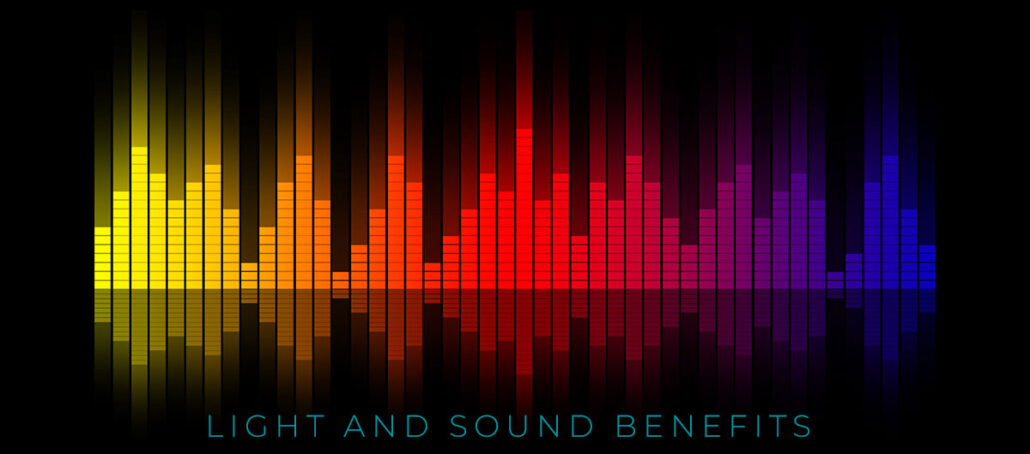
Nexus devices come with different colored LEDs in the light frames. Certain colors are associated with particular states and offer different benefits. The brightness of the lights will increase stimulation and making changes to the brightness of the lights can aid in increasing attention.
Let’s take a look at what each color does:
To the eye-brain system, there is no difference in physiological & psychological response to yellow light and a mixing of red/green light. The brain has no means of distinguishing between the two physical situations.
Note: Some people are more light sensitive than others and the practitioner should always check with the client to insure that the light levels are comfortable before running the session.
Our hearing is limited to 20 – 20,000 Hz. Notice that most of the important entrainment frequencies are below what we can actually hear. What is important to note is that it is the pulse of the tone which creates the frequency, not the pitch (sound). So what you are actually hearing is the pitch of the pulsed tone or frequency, not the frequency itself.
There are basically three types of beats you will hear about: Monaural, Binaural & Isochronic.
A Monaural beat is a simple beat like that produced by a drum. Monaural beats are usually what you’ll find with any music.
An Isochronic beat is a monaural beat that is evenly spaced. Although, there have been studies that show binaural beats to be superior to Monaural or Isochronic, there are many people who favor Isochronic beats and claim to achieve favorable results using them.
If you hear a series of frequencies, let’s say through your stereo, your brain will group
the frequencies together or choose a mid point between the frequencies to entrain to.
Binaural Beats
A Binaural beat is a perceived beat which is created by exposing one ear to one frequency and the other ear to a different frequency. The frequency perceived by the brain is the difference between the two frequencies. So for example, if you expose one ear to 110 Hz and the other ear to 100 Hz, the frequency that the brain perceives will be 10 Hz. You can only perceive a binaural beat if you are wearing headphones or have speakers placed by each ear. If your left ear can hear what is going into your right ear, you will perceive the frequency as a monaural or isochronic beat. In order for your brain to create a binaural beat, it must hear different frequencies in each ear.
“The binaural beat is perceived as a fluctuating rhythm at the frequency of the
difference between the two auditory inputs. Evidence suggests that the binaural beats are generated in the brainstem’s superior olivary nucleus, the first site of contralateral integration in the auditory system (Oster, 1973). Studies suggest that the frequency – following response originates from the inferior colliculus. This activity is conducted to the cortex where it can be recorded by scalp electrodes.”3
In one study at the University of Wisconsin-Madison findings indicated that people with
depression had a less active left hemisphere. Given this information, a possible treatment for depression would be to use an Alpha based program that uses binaural beats since the nature of binaural beats is to get both hemispheres working together4.
“Dual BBs will often (but not always) produce monoaural beats as well, since two tones are present in both ears. One exception is to keep the frequency relationships set to harmonics, for example, 200 & 400 Hz left and 206 & 412 Hz right.
Thomas Budzynski tested several kinds of beats: binaural, dual binaural and monaural. The BB’s were the only ones which could cause discernable EEG activation. We were surprised that dual BB’s did not appear to do so – but the experiment was small.
Dr. Len Ochs once measured the effect of a constant BB and ramping lights; both induced EEG activation at their set frequencies. Light produced a stronger effect than sound.”5
Re: Pitch variance
The pitch of the pulsed tone doesn’t have much (if anything) to do with entrainment – only the pulse rate. The real reason for varying the pitch for normal pulsed sound is to provide variety and prevent (or reduce) sensory habituation, which can occur when the same stimulus proceeds for too long.
